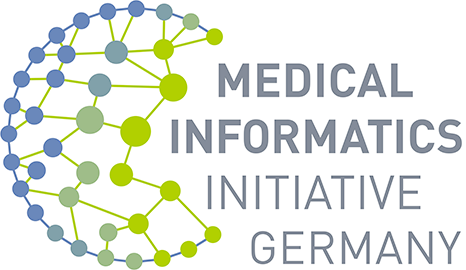The consortia of the Medical Informatics Initiative (MII) and all participating university hospital sites have agreed upon a common set of core data. This is based on international IT and terminology standards, and is the prerequisite for shared use of data. Within the MII’s corresponding working groups, the university hospital sites across all consortia defined what data records must, at a minimum, be captured and stored by the MII’s data integration centres for all in-patients – independent of medical indication and of each consortium’s specific use case. This guarantees interoperability between data integration centres despite their diverse underlying concepts.
Patient care data are highly diverse. They originate from multiple source IT systems, and are sometimes structured, and sometimes unstructured. They differ in scope, defined format and content (medical significance, semantics). As a result, the proposed data integration centres face not just the challenge of consolidating data from multiple sources from a purely technical standpoint, but also of achieving a degree of standardisation that enables data analysis at acceptable effort and expense, and with transparent data quality – making them available for a variety of medical research purposes. This requires harmonisation across all sites and consortia to enable data to be effectively utilised in data integration centres throughout Germany.
The MII core data set is divided into basic and extension modules. The basic modules are generic in nature, and are not confined to any one discipline. The extension modules model data for specific areas of application or disciplines, and are included in data requests/applications in line with the needs of the research topic. The MII core data set is subject to continuous and sustainable development in line with real-world needs, and on the basis of international consultation and agreement.
The first version of the MII core data set was approved in March 2017 in the form of a text description. The inclusion of any given module in the set was made dependent on the following criteria:
- Relevance to research and patient care
- Relevance to the consortia use cases
- Availability and accessibility of the corresponding data at MII sites
- The degree of data structuring and the availability of terminology
The core data set not only prescribes the scope of data, but more importantly standardises the medical content in line with international standards. For example, it was agreed that the core data set be represented by the HL7 FHIR format. For the data set’s (further) development, the following tools will be employed: ART-DECOR for data set modelling and Forge/Simplifier.net for the generation and publishing of profiles in HL7 FHIR. The terminology to be used for semantic encoding depends on the specific module, e.g. LOINC for the laboratory test results module.
Contact:
Do you have any questions or suggestions regarding the further development of the core data set or individual core data set modules? Would you like to get involved in the work on the core data set?
Please contact us by email at office@medizininformatik-initiative.de (keyword: core data set).
Current documents:
Download (in German): Geschäftsordnung für die Weiterentwicklung des MII-Kerndatensatzes
version 3.0 (June 26, 2021) [PDF | 660 KB]
Predecessor documents:
Download (in English): MII Core Data Set
version 1.0 (March 10, 2017) [PDF | 911 KB]
Download (in German): Kerndatensatz der Medizininformatik-Initiative
version 1.0 (March 10, 2017) [PDF | 579 KB]
More information:
Basic modules of the MII core data set (with implementation guides)



